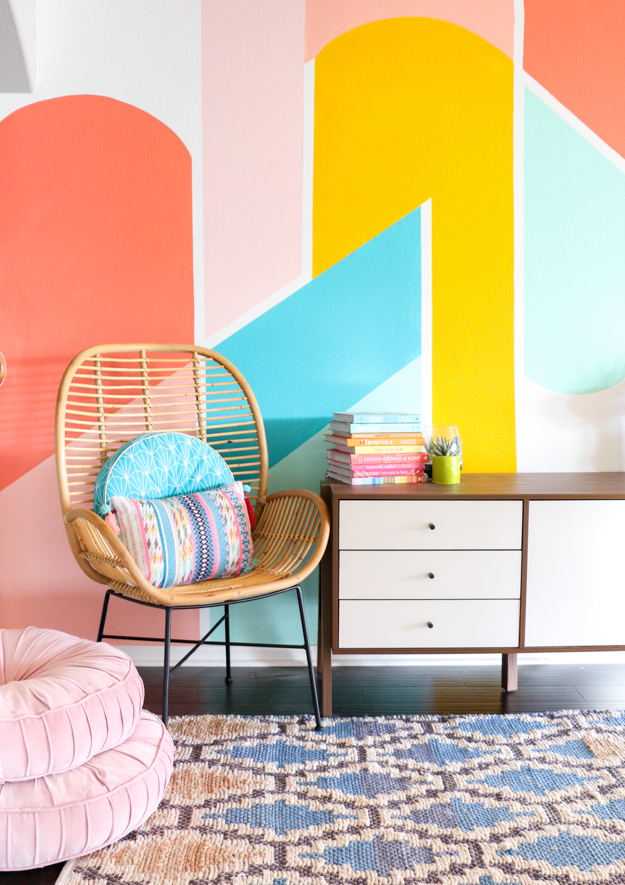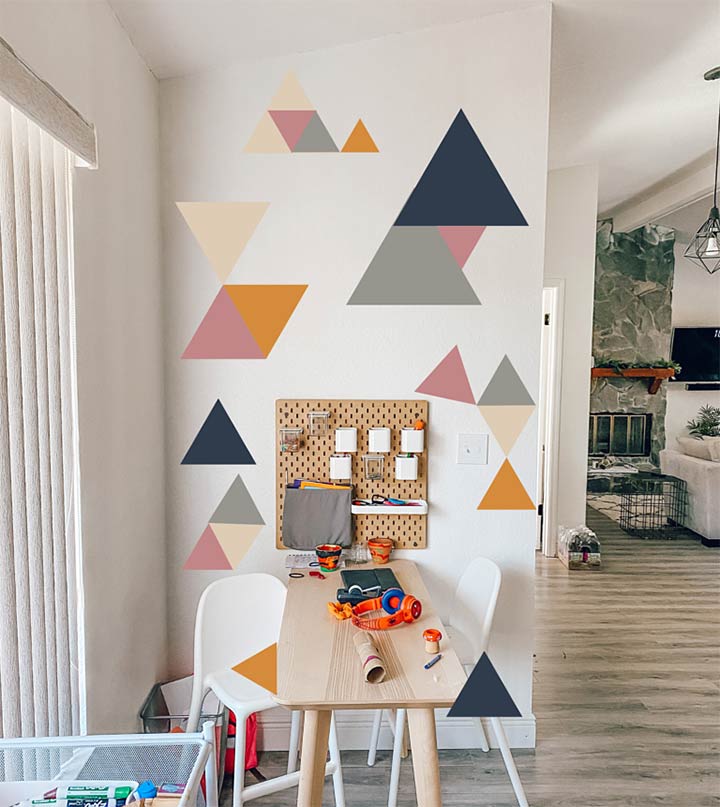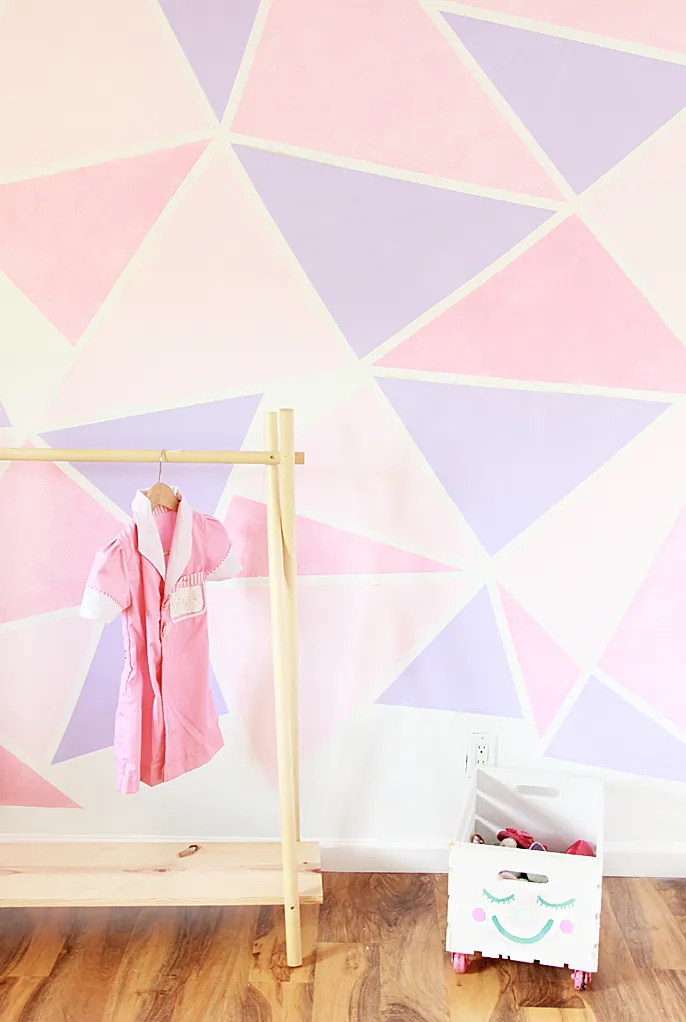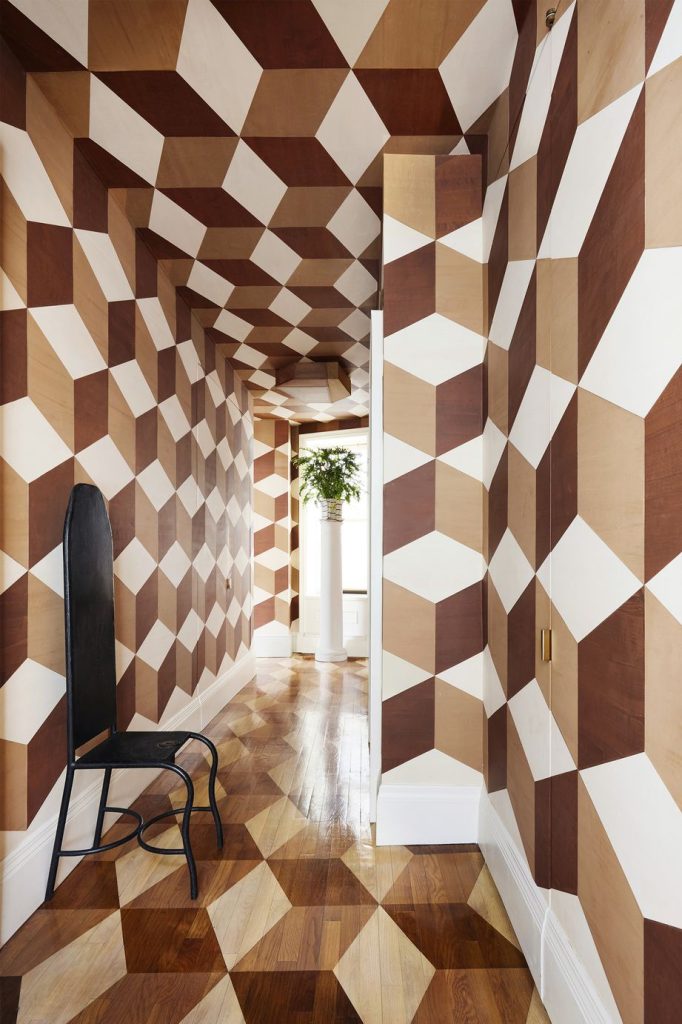Geometric wall paint has become a popular trend in interior design, offering a unique and visually striking way to transform living spaces. Whether you’re looking to add a modern touch to your home or create a bold statement, geometric wall paint can elevate the aesthetic appeal of any room. In this comprehensive guide, we will explore the various techniques, design ideas, and practical tips for incorporating geometric wall paint into your interior decor. From choosing the right patterns to executing the painting process, this guide will provide you with everything you need to know to achieve stunning and stylish results.

Geometric wall paint advantages
In the realm of interior design, geometric wall paint has emerged as a versatile and visually captivating technique for transforming living spaces. From adding a modern touch to creating a bold statement, geometric wall paint offers a myriad of advantages that can elevate the aesthetic appeal of any room.
Versatility:
Geometric wall paint is incredibly versatile, offering a wide range of design options to suit different styles and preferences. Whether you prefer simple stripes, intricate patterns, or abstract shapes, geometric wall paint can be customized to complement the existing decor and architecture of a room. This versatility allows homeowners to express their creativity and individuality through unique and personalized designs.
Visual Impact:
One of the key advantages of geometric wall paint is its ability to create a strong visual impact in a space. Bold geometric patterns can instantly draw the eye and serve as a focal point in a room, adding depth, interest, and personality to the surroundings. Whether used on an accent wall or throughout an entire room, geometric wall paint has the power to transform a space and make a statement.

Illusion of Space:
Geometric wall paint can also be used to create optical illusions that enhance the perceived size and dimensions of a room. By strategically applying geometric patterns such as chevron, herringbone, or geometric grids, it is possible to visually expand a space, making it feel larger, airier, and more spacious. This makes geometric wall paint a valuable tool for small rooms or areas where a sense of openness is desired.
Understanding Geometric Wall Paint
Geometric wall paint involves the use of geometric shapes, lines, and patterns to create visually captivating designs on walls. This form of decorative painting offers endless possibilities for customization, allowing homeowners to express their creativity and individuality. From simple stripes and chevron patterns to intricate hexagonal and diamond motifs, geometric wall paint can be tailored to suit different styles and preferences, making it a versatile choice for interior decor.

Choosing the Right Patterns and Designs
When considering geometric wall paint for your home, it’s essential to select patterns and designs that complement the existing decor and architectural features of the space. Begin by exploring various geometric patterns, such as triangles, squares, circles, or abstract shapes, and envision how they would harmonize with the room’s overall aesthetic. Additionally, consider the scale of the patterns and their visual impact—larger patterns can make a bold statement, while smaller ones may offer subtler detailing.
Selecting the Color Palette
How to paint a wall with a roller?The color palette plays a crucial role in the success of geometric wall paint. Whether you opt for monochromatic schemes, contrasting colors, or complementary hues, the selected palette will influence the mood and atmosphere of the room. Consider the existing color scheme of the space and choose colors that either harmonize with or provide a striking contrast to the surroundings. Experiment with color swatches and consider how natural light affects the chosen colors to ensure a cohesive and visually appealing result.
Preparing the Wall Surface
Before embarking on the painting process, it’s important to prepare the wall surface properly. This involves cleaning the walls to remove any dirt, dust, or grease, and ensuring that the surface is smooth and free from imperfections. Use a mild detergent solution and a sponge to clean the walls, and fill in any cracks or holes with spackling compound before sanding the area for a seamless finish. Proper wall preparation is essential for achieving professional-looking results with geometric wall paint.

Tools and Materials Needed
Gather the necessary tools and materials for the geometric wall painting project. You will need painter’s tape to create clean and precise edges for the geometric patterns, as well as paint wall brushes and rollers for applying the paint. Additionally, invest in high-quality paint in the chosen colors, ensuring that it has good coverage and durability. A level, measuring tape, and pencil will be essential for marking out the geometric patterns accurately before painting.
Creating Geometric Patterns
The process of creating geometric patterns on the walls requires precision and careful planning. Begin by marking out the desired patterns using a measuring tape, level, and pencil. Use painter’s tape to mask off the areas where you want to maintain clean lines and edges. Whether you’re envisioning a geometric feature wall or an all-over pattern, take your time to ensure that the lines are straight, the angles are consistent, and the spacing is uniform.
Painting Techniques and Tips
When it comes to garage wall paint, consider the appropriate painting techniques for the chosen geometric patterns. For crisp and clean lines, use a small brush to carefully outline the shapes and then fill them in using a roller or larger brush. Take your time to ensure that the paint is applied evenly and consistently, especially when working with multiple colors. Remove the painter’s tape carefully while the paint is still wet to reveal sharp, defined edges.
Finishing Touches and Maintenance
Once the geometric wall paint is complete, step back to admire your handiwork and make any necessary touch-ups. Allow the paint to dry completely before assessing the final result. If there are any imperfections or areas that require refinement, use a fine brush to address them. Additionally, consider applying a clear topcoat or sealant to protect the painted surface and enhance its longevity. Regular maintenance, such as gentle cleaning and occasional touch-ups, will help preserve the beauty of the geometric wall paint over time.

Conclusion:
Geometric wall paint offers an exciting avenue for infusing personality, style, and visual interest into interior spaces. By understanding the principles of geometric design, selecting the right patterns and colors, and executing the painting process with precision, homeowners can achieve stunning results that elevate the ambiance of their homes. Whether you choose to adorn a single accent wall or embrace geometric patterns throughout a room, the versatility and impact of geometric wall paint make it a compelling choice for those seeking to make a decorative statement. With the guidance and insights provided in this comprehensive guide, you can confidently embark on your geometric wall painting journey and transform your living spaces into captivating works of art.